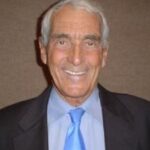On the opening page of What School Could Be: Insights and Inspiration from Teachers across America author Ted Dintersmith quotes John Dewey, a progressive icon of early education who said, “If we teach today’s students as we taught yesterday’s, we rob them of tomorrow.” In the ensuing 220 pages, Dintersmith attempts to prove this statement in a unique manner. The author embarked upon a nine month educational trek across the country, visiting exceptional schools and teachers in all 50 states. Although he does not explain how he found them, he did speak with many governors and state superintendents of education who in some cases provided valuable insights. Sometimes briefly, sometimes extensively, he explains the educational innovations taking place in all the states. Along the way, Dintersmith provides biting commentary and plenty of stories on the myriad innovations he witnessed in classrooms.
The education exploration journey began in the fall of 2015 as an odyssey to meet teachers and children in ordinary circumstances doing extraordinary things. Most enjoyable is how he tells the reader what he learned from his 50 state tour at the very outset, and then goes on to show how he learned these principles.
For instance, he learned that students need to be challenged in a realistic way. New curriculums must relate to a rapidly changing world. Teachers need to instruct students to become self-directed in a creative manner.
Dintersmith also found that preparing students to be “college ready” impedes learning. This approach ignores practical skills and places little time on “hands on learning.” He believes K-12 education can do much of what college fails to do. He writes “today, the purpose of US education is to rank human potential, not to develop it” and I totally agree.
The success stories he documents are very individualistic, as perhaps they should be. Historically, the federal government played a limited role in education until 1965 when President Lyndon Johnson signed the Elementary and Secondary Education Act to fund programs for the poor. In 1979, Jimmy Carter accelerated the downward spiral when he re-established (and expanded) the Department of Education.
All over the United States, Dintersmith found good teachers trying to buck a system where students brim with curiosity, creativity and audacity, traits all too rare nowadays—sacrificed in the crusade to produce transcripts that shine.
In Stonington, Connecticut a teacher reminded him of a famous Einstein quote, “not everything that counts can be counted and not everything that can be counted, counts.”
In Fort Wayne, Indiana he met a teacher who taught outside the prescribed box and said one of the most exciting parts of teaching was learning along with her students.
In Charleston, South Carolina one high school is focusing on outdoor education with ropes courses, and a school garden. They brought back shop classes and the students are helping to build a new shop. They have work groups each lead by a senior.
In Fargo, North Dakota a high school teaches history by having students research the entire history of old buildings in the down town area.
In Grand Rapids, Michigan they are questioning why poor grades in algebra have caused some students not to graduate, even though few will ever use algebra after high school.
Dintersmith found that great teaching has little to do with progressive-oriented teacher training programs that dominate most education colleges.
Olympic High School in Charlotte, North Carolina partners with 40 local businesses to give students amazing opportunities for internships and apprenticeships. Across America, Dintersmith found that our kids study what is easy to test, not what is important to learn.
Somehow Dintersmith found creative teachers unsatisfied with the way state standards demand they teach. Many saw the difference between teaching students a subject and teaching students to critically think, or teaching them history instead of teaching them how an historian thinks. He learned from his adventures that when we push kids along a content laden college ready path, they are rewarded more for memorization than for contemplation.
This book is about courageous educators daring to do better. Teachers who empower students to discover and achieve their own definition of success are all too rare. Dintersmith had planned to end his trip talking with policy makers in Washington DC. Near the end of his national education tour, President Obama invited him to a Whitehouse education summit. Being a strong supporter of Obama he jumped at the chance, only to find that nothing in the summit would lead to the changes he believed necessary.
The author was sure he would find the most innovative education programs to be in blue political states but he did not find this to be the case at all. Instead, he found innovation almost everywhere. He found the universally most damaging words to be “we have to be able to measure it.” Education in America has been declining for too long, well before Common Core entered the lexicon. Common Core came close to placing a final nail into K-12 education’s coffin, but teachers are fighting back all across the nation.
This is a very optimistic book that should be required reading for every new young teacher who enters into the sacred halls of an education career.
Purchase: https://www.amazon.com/What-School-Could-Be-Inspiration/dp/069118061X
Author: Ted Dintersmith
ISBN: 9780691180618
Price: $18.68





